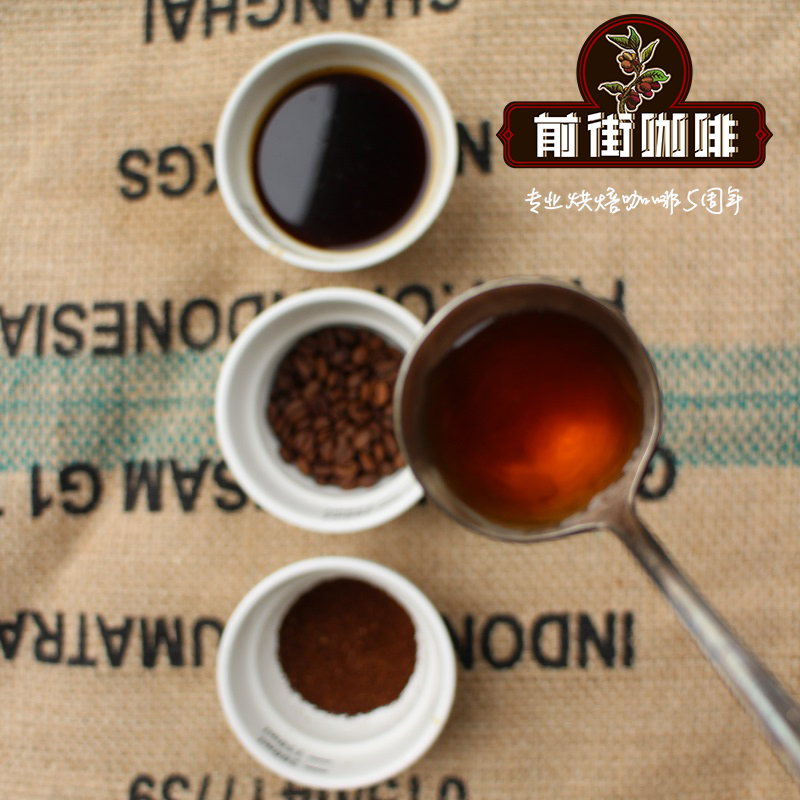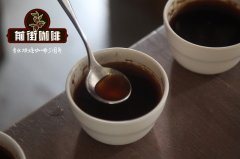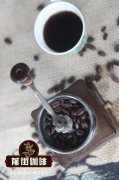La Florida, Peru | washed iron card and Kaddura coffee in Chanchamayo producing area of Chia Mayou.

Professional coffee knowledge exchange more coffee bean information please follow the coffee workshop (Wechat official account cafe_style)
Peruvian La Florida | what is the flavor of washed tin card and Kaddura coffee beans in Mayou Chanchamayo producing area?
Peru is dominated by small farmers, each with less than two hectares of land and produces about 3000 pounds of coffee per hectare. Organic cultivation has a long history and is quite common in Peru. The main reason is that farmers here have opportunities or capital to invest in chemical fertilizers, pesticides and herbicides. However, in recent years, with climate change, coffee leaf rust has spread in various countries, because of organic cultivation, but also caused a massive reduction in Peruvian coffee production. Peruvian Coffee Dulin is grown in high altitude areas, mainly Arabica varieties. Under the growth of slowly maturing, the density of beans here is higher, and the flavor changes quite a lot. Among them, the highest altitude, Peru's most important coffee producing area is: Chia Mayou, located in the central highland on the eastern side of the Andes. This was followed by the Amazon and St. Martin, located in the northern highlands to the east of the Andes.
Peruvian coffee beans are produced in La Florida, located in the northeastern highlands of the Andes, which is the most famous of the nine coffee producing areas in Peru, Chanchamayo, which is a high-altitude rain woodland. Its coffee garden is in the middle of 1200m, with an average annual temperature of 17-30 degrees and annual rainfall of 1500-2000 mm. It is a good place to grow coffee.
In fact, La Florida is a cooperative, founded in 1965 by 100 farmers, has grown to nearly 1200 farmers, almost each family only grows 2 to 3 hectares of coffee land. In their coffee plantations, which use only natural fertilizers instead of synthetic fertilizers, herbicides and pesticides, the cooperative has its own technical teams, small lending institutions for housewives to support their families, and small medical centers. Funds have also been set up to buy cooperative coffee processing machines.
Peruvian coffee beans are planted and harvested artificially. After harvesting ripe coffee fruits, peel and pulp are removed, then washed and fermented with water. After fermentation, the natural sun method is used to prevent beans from being contaminated with soil and other sundries. Its sweet and sour taste, very few miscellaneous flavor is quite clean, for South American beans, the texture is quite excellent.
The coffee planting area in Peru is mainly located in the central Chanchamayo region, and the two most famous planting areas in this area are Villa Rica and La Merced, respectively, and the main varieties are Typica Arabica. The history of coffee cultivation in Peru can be traced back to 1930, when a group of German immigrants settled in what is now the Villa Rica area and started the economic activities of coffee cultivation, which also brought new cultural injection to the region and developed special new cultural characteristics of the region. In memory of these new residents from afar, it was designated as "Settler'" on June 26th every year. S Day (anniversary of new immigrants). Nowadays, there are many local coffee farmers who are descended from these immigrants, and they continue to operate these precious coffee farms from generation to generation!
Villarica is a bustling eastern Andean town with a large area of rich ecological conservation forests and a well-known bird sanctuary. It is amazing to find that 400 species of birds inhabit in Villa Rica! Thus it can be seen that Villarica is a coffee producing area that is very friendly to the natural environment-coffee is planted at an altitude of about 1500m, with an average annual temperature of 20 degrees and an annual rainfall of about 1800 mm. It is very suitable for the growth of coffee trees. Farmers adopt organic composting and planting, and the varieties are mainly Typica (Tiebika). The quality of raw beans is very stable, and the harvest period lasts from April to September every year. Raw beans are washed and fermented after harvest and dried in the natural sun. The coffee produced in Villa Rica area has a special creamy nutty aroma, warm and soft taste, good sweetness, and slightly rising fruit acid in the latter section can bring a comfortable aftertaste.
Peru began to grow Arabica coffee in the 18th century, all for washing treatment, mainly exported to the United States and Germany. Because they are all grown in forest areas, under natural conditions, and almost all of them are grown without pesticides, it is now the third largest exporter of coffee in South America and the ninth largest exporter of coffee in the world. Cha Ma you Coffee (Peru SHB Changchamayo) is located in central Peru. Its producing area is one of the major producing areas in Peru. Coffee is grown in mountains above 1300 meters. The appearance and color of beans is a bit like half-sun color, and the taste is mild and slightly sour. Starbucks / Starbucks has special sales of this coffee bean.
Pure organic cultivation: no application of synthetic fertilizers and pesticides. All are made from organic fertilizer fermented from the peel and pulp of forest deciduous mixed coffee fruit. It is most suitable for environmentally friendly cultivation and beneficial to human health.
Shade cultivation: all planted under the big trees of the rainforest, not preparing the land, planting completely according to the topography, which is most in line with soil and water conservation and natural ecological cultivation, which is different from cutting down the rainforest or preparing the land, like planting a citrus orchard.
Harvest method: use the most labor-intensive, but only pick the full-grown and fully ripe fruit, harvest every 7 days from May to October. It is different from picking all the fruit once, regardless of whether it is fully ripe or not.
raw bean production: using the natural fermentation method of "pure water washing", which consumes the most labor and time, and does not add artificial fermentation agents. The fresh fruits harvested on the same day were separated by peel and pulp machine and introduced into clean mountain spring water. After fermentation for 36 hours, they were finally washed many times with mountain spring water. Completely processed seeds with sheepskin are transported to the bean drying farm for rapid drying (just when there is no rain in the dry season) for harvest, storage or sale. The way of drying beans is almost the same as that of early rice drying in Taiwan.
Raw beans: usually in order to maintain the best quality, the dried seeds with sheepskin and membrane (about 11% humidity) are stored in coarse linen bags, and then the sheepskins are removed by machine when they are sold. Then the poor quality raw beans and impurities are manually picked out, then packed into burlap bags and transported to the destination in order to maintain the best quality.
Strain: Typica (red fruit) 80%, Caturra (yellow fruit) 20%
A fruit tree called "INGA", commonly known locally as Pacay, is widely planted in the planting area, which not only provides good shade, but also provides birds for foraging during the flowering and fruiting season.
Small farmers have organized producers' cooperatives to weave a complete sales mechanism of raw beans.
Almost every farm has perfect raw bean processing equipment to facilitate the best processing time after coffee cherry harvest.
The cooperative provides re-refining and grading screening, and the coffee raw beans are bagged completely and exported directly to buyers of various countries, effectively striving for the storage validity of raw beans and avoiding the possible damage to the quality of raw beans caused by improper storage environment that may occur after transportation is concentrated in the port of Lima (Lima).
Cooperatives have long been in line with international coffee organizations and are committed to fair trade and the implementation of organic growth. at present, Villa Rica is the second largest organic fair trade coffee producing area in the world.
The farm plans to replace the seedlings under the optimal fruit production years of coffee trees in order to maintain the trade of high-quality coffee.
Effective use of coffee cherry pulp and fermented organic matter waste water for organic composting and then used for planting virtuous cycle.
▪️ producing area: cha Mayou (Chanchamayo)
▪️ treatment: washing treatment
▪️ altitude: 1350m
▪️ flavor: soft citrus acid, chocolate, supple, clean finish, drupe, good sense of balance.
Qianjie recommended cooking:
Filter cup: Hario V60
Water temperature: 90 degrees
Degree of grinding: small Fuji 3.5
Cooking methods: the ratio of water to powder is 1:15, 15g powder, the first injection of 25g water, 25 s steaming, the second injection to 120g water cut off, waiting for the powder bed water to half and then water injection, slow water injection until 225g water, extraction time about 2:00
Analysis: using three-stage brewing to clarify the flavor of the front, middle and back of the coffee. Because V60 has many ribs and the drainage speed is fast, it can prolong the extraction time when the water is cut off.
Important Notice :
前街咖啡 FrontStreet Coffee has moved to new addredd:
FrontStreet Coffee Address: 315,Donghua East Road,GuangZhou
Tel:020 38364473
- Prev

Guatemala Jasmine Manor SHB Coffee Bean hand-brewing parameters suggestion _ Jasmine Manor introduction
For more information on coffee beans, please follow the Coffee Workshop (Wechat official account cafe_style) Guatemala borders Mexico to the north, Honduras and El Salvador to the south, the Caribbean to the east and the Pacific Ocean to the west, enjoying tropical rain forests, volcanic geology, plateau valleys and changing microclimate. Guatemalan coffee enjoys the world's quality.
- Next

Guatemala Chacaya / Mystic Lake Coffee Manor Story _ Guatemala Chacaya washing suggestion
Professional coffee knowledge exchange more coffee bean information please follow the coffee workshop (Wechat official account cafe_style) Product name: Guatemala Chaca Santiago English: Gutatmala Chacaya Santiago community farms method: washing treatment roasting degree: medium roasting flavor description: dark chocolate, walnut, sugared orange peel mysterious lake manor coffee FIN
Related
- Detailed explanation of Jadeite planting Land in Panamanian Jadeite Manor introduction to the grading system of Jadeite competitive bidding, Red bid, Green bid and Rose Summer
- Story of Coffee planting in Brenka region of Costa Rica Stonehenge Manor anaerobic heavy honey treatment of flavor mouth
- What's on the barrel of Blue Mountain Coffee beans?
- Can American coffee also pull flowers? How to use hot American style to pull out a good-looking pattern?
- Can you make a cold extract with coffee beans? What is the right proportion for cold-extracted coffee formula?
- Indonesian PWN Gold Mandrine Coffee Origin Features Flavor How to Chong? Mandolin coffee is American.
- A brief introduction to the flavor characteristics of Brazilian yellow bourbon coffee beans
- What is the effect of different water quality on the flavor of cold-extracted coffee? What kind of water is best for brewing coffee?
- Why do you think of Rose Summer whenever you mention Panamanian coffee?
- Introduction to the characteristics of authentic blue mountain coffee bean producing areas? What is the CIB Coffee Authority in Jamaica?

